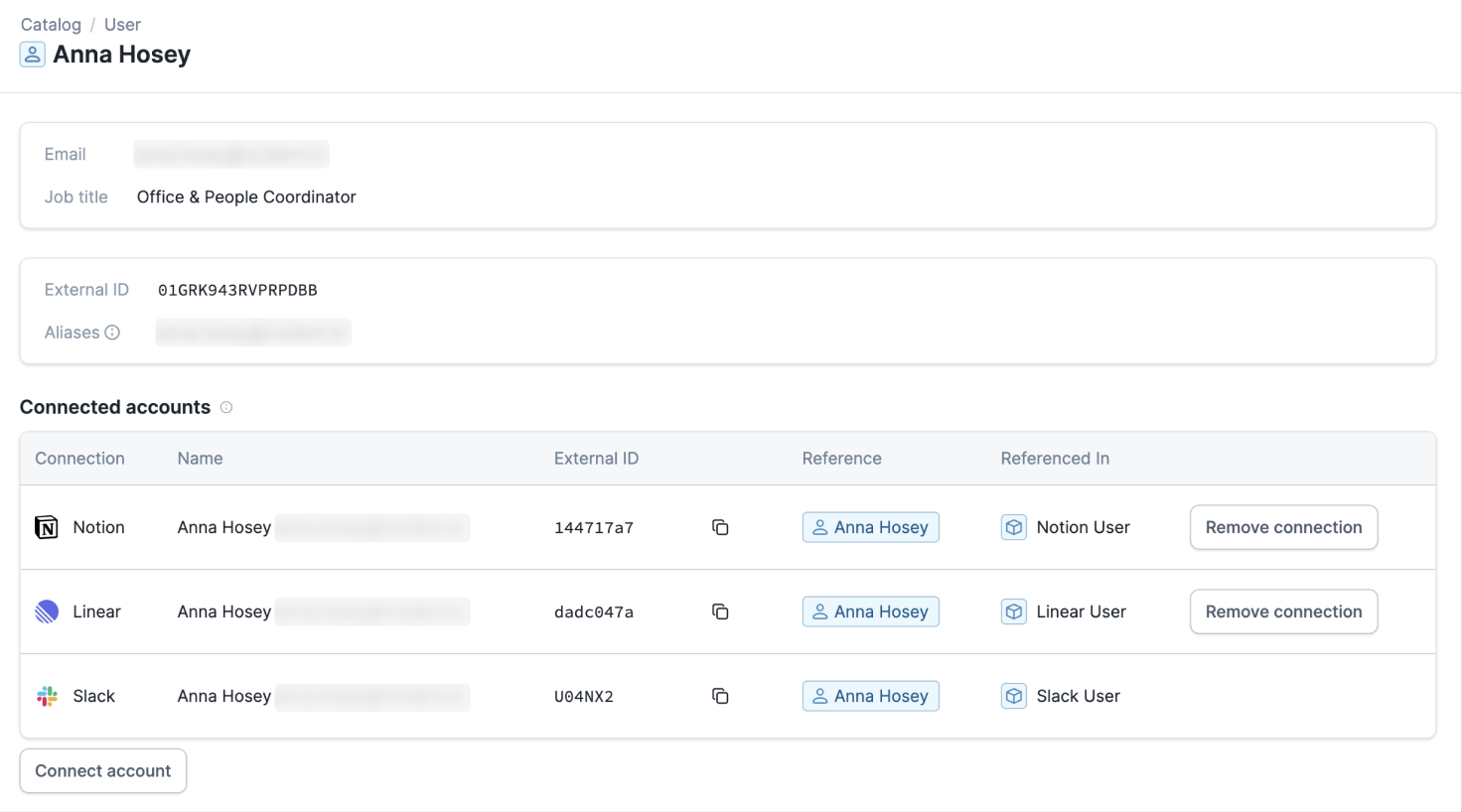Add connected users to Catalog
January 30, 2024

Users of incident.io — your incident responders — are so core to the incident management process that it feels silly to even point it out. Those responders likely have accounts across many daily-use services, including services that you can (and should!) integrate with incident.io, like PagerDuty, Sentry, Linear and more. In making our Catalog even more powerful and intuitive, the clear next step was to add a clear, canonical representation of your users.
So, that’s exactly what we’ve built — we’ve shipped a substantial improvement to the way we think about users, officially making them a first-class citizen in our platform.
You’ll first notice that incident.io users now make up their own Catalog type. If you click on a single user, you’ll see that we’ve linked them to their counterparts in your integrated services.

Each of these connected accounts will link to another new catalog type - the user from the integrated service. These connections are configurable, and can be added and removed as and when you need to (except for Slack accounts — these are rather important 😊).
You can also manage your own connected accounts from the Connected Accounts section of the Preferences menu:

In the past, we've had to rely on email addresses to connect you to the equivalent user in a third party system. That was particularly unreliable for integrations like GitHub and Jira, where we often didn't have access to an email address.
If you connect your accounts, we'll then be able to do things like:
- Assign follow-ups to the right incident.io user when they're assigned in Jira or GitHub
- Tag the correct incident participants when exporting a postmortem to Notion or Confluence
- Invite the person who acknowledges an escalation to an incident channel
We'll also be enabling more complex automations by connecting your Users to other parts of your Catalog, so watch this space!
🚀 What else we’ve shipped
New
- Automatically pin the post-incident flow message so it's easy to find
- If you have a derived custom field, we'll now update the value in real-time
- You can now use expressions to dynamically set the duration of a debrief
- New onboarding task was added to guide new users in setting up a post incident flow for critical incidents
- You can now create a new catalog type from an existing column. Just right click the column header to quickly create and populate a new custom catalog type!
Improvements
- Update our forms icon to look less like the word 'AI'
- If you try to cancel a triage incident in Slack, we'll show you a useful error message
- We now support custom URLs for connecting ClickUp tasks as follow-ups
Bug fixes
- Allow users to decline an incident from the dashboard without choosing a severity
- Don't show deactivated users as options to assign to in workflows
- Fixed a bug where you'd sometimes see no services in the escalate modal where most of your services were marked as
incident-io-ignore - Fixed a bug where occasionally the 'add condition' modal would disappear while you were editing it
- Fixed a bug where certain dropdowns in workflows were missing the
optionaltag, despite being optional - We now surface errors encountered when attempting a sync of Jira ticket for an incident
So good, you’ll break things on purpose
Ready for modern incident management? Book a call with one of our experts today.

We’d love to talk to you about
- All-in-one incident management
- Our unmatched speed of deployment
- Why we’re loved by users and easily adopted
- How we work for the whole organization



